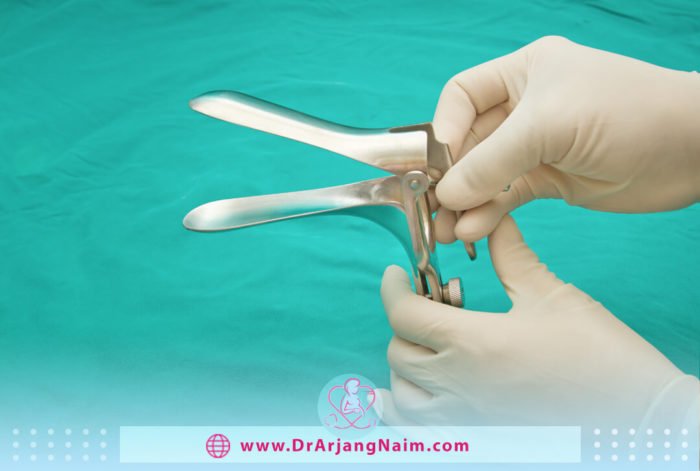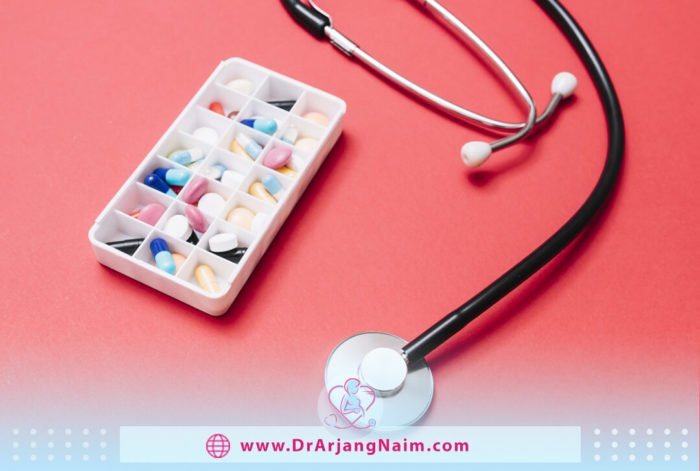Painful bladder syndrome or interstitial cystitis (IC) also known as bladder inflammation syndrome, is a chronic and painful condition that is difficult to diagnose. The disease causes pressure and pain in the bladder and sometimes pelvic pain. Pain varies from mild discomfort to severe.
The bladder is a hollow, muscular organ in which urine is stored. When full, the bladder expands and then signals to the brain that it is time to urinate and communicate through the pelvic nerves. This causes the urge to urinate in most people. The person feels the need to urinate more and less volume than most people. IC most often affects women and can have a long-term impact on quality of life. Although there is no cure, medications and other treatments may help.
Symptoms

The signs and symptoms of interstitial cystitis vary from person to person. Symptoms may vary over time and periodically flare up in response to common stimuli such as menstruation, prolonged sitting, stress, exercise, and sexual activity. signs and symptoms include:
- Chronic pelvic pain
- A persistent, urgent need to urinate
- Frequent urination, often of small amounts, throughout the day and night
- Pain during sex
- Pain in your pelvis or between the vagina and anus in women
- Pain between the scrotum and anus (perineum) in men
- Pain or discomfort while the bladder fills and relief after urinating
The severity of the symptoms varies from person to person, and some people may experience asymptomatic periods.
Although the signs and symptoms of interstitial cystitis may be similar to those of a chronic urinary tract infection, there is usually no infection. However, if a person with IC develops a urinary tract infection, the symptoms may worsen.
Causes
The exact cause of IC is not known, but several factors can damage the bladder lining and cause the disorder. This includes:
- Autoimmune disorders
- Repeated bacterial infections
- Hhypersensitivity or inflammation of pelvic nerves
- Spinal cord trauma
- Trauma to the bladder lining (for example, from surgical procedures)
- Excessive stretching of the bladder, usually due to long periods
- Weakened or dysfunctional pelvic floor muscles
Many people with IC also have Irritable Bowel Syndrome (IBS) or fibromyalgia. Researchers are also investigating how individuals may inherit a genetic predisposition to IC. Although not common, IC has been reported in blood relatives. Cases have been seen in mothers and daughters and two or more sisters. Research is underway to determine the cause of IC and develop more effective treatments.
Risk factors
These factors are associated with a higher risk of interstitial cystitis:
- Sex: Women are more likely than men to have interstitial cystitis.
- Age: Most people are diagnosed at age 30 or older.
- Chronic pain disorder: IC may be associated with other chronic disorders like irritable bowel syndrome or fibromyalgia.
Complications
Interstitial cystitis can lead to a number of complications, including:
- Reduced bladder capacity: IC can tighten the bladder wall, allowing the bladder to hold less urine.
- Lower quality of life: Frequent urination and pain may interfere with social activities, work, and other activities of daily living.
- Sexual intimacy problems: Frequent urination and pain may strain personal relationships and damage sexual intimacy.
- Emotional troubles: Chronic pain and sleep disorders associated with interstitial cystitis may cause emotional stress and lead to depression.
Diagnosis
There are several diagnostic methods.
Medical history and bladder diary
In this case, the doctor asks the patient to have a bladder diary and record the volume of fluids she drinks and the volume of urine excreted.
Pelvic exam

During the pelvic exam, the doctor examines the vagina and cervix and feels the abdomen to assess the internal organs of the pelvis. The doctor may also examine the anus and rectum.
Urine test
A urine sample is checked for signs of a urinary tract infection.
Cystoscopy
The doctor inserts a thin tube with a small camera (cystoscope) through the urethra that shows the bladder’s lining and may inject fluid into the bladder to measure bladder capacity.
Biopsy
During anesthesia cystoscopy, the doctor removes a tissue sample (biopsy) from the bladder and urethra for examination under a microscope. This is for examining bladder cancer and other rare causes of bladder pain.
Urine cytology
A urine sample is collected and examined for cells to help rule out cancer in this procedure.
Potassium sensitivity test
Insert two solutions of water and potassium chloride into the bladder each time. The person is asked to rate the pain and urgency they feel after injecting each solution on a scale of 0 to 5. If the potassium solution causes more pain or urgency than water, the doctor may diagnose interstitial cystitis. People with normal bladders cannot tell the difference between the two.
Who gets interstitial cystitis?
About 90% of people with interstitial cystitis are women. About 3 to 6 percent of adult women have some form of it. On average, people first have problems in their 40s. The risk increases with age.
Treatment
No simple treatment can eliminate the signs and symptoms of interstitial cystitis. Different treatments or combinations of therapies may need.
Physical therapy
Working with a physiotherapist can relieve pelvic pain associated with muscle tenderness, restrictive connective tissue, or muscle abnormalities in the pelvic floor.
Oral medications

Some oral medications improve the signs and symptoms of IC :
- Nonsteroidal anti-inflammatory drugs
- Tricyclic antidepressants
- Antihistamines
- Pentosan polysulfate sodium
Nerve stimulation
Nerve stimulation techniques include:
- Transcutaneous electrical nerve stimulation (TENS): With TENS, mild electrical pulses relieve pelvic pain and, in some cases, reduce the frequency of urination. TENS may increase blood flow to the bladder. This may strengthen the muscles that help control the bladder or release substances that block pain.
The electrical wires, located in the lower back or just above the pubic area, send electrical pulses; the length of time and frequency of treatment depends on what is best for the patient.
- Sacral nerve stimulation: The sacral nerves are the primary link between the spinal cord and the bladder nerves. Stimulation of these nerves may reduce the urgency of urination associated with interstitial cystitis.
By stimulating the sacral nerve, a thin wire placed near the sacral nerves sends electrical impulses to the bladder, similar to what a pacemaker does for the heart. A permanent device may be implanted surgically if this procedure reduces the symptoms. This method does not control pain but may help reduce some symptoms such as frequent urination and urgency.
Bladder distention
Some people notice a temporary improvement in symptoms after cystoscopy with dilatation of the bladder. Bladder dilation is the stretching of the bladder with water.
Botulinum toxin A (Botox) may be injected into the bladder wall during bladder dilation. However, this treatment option can be impossible to empty the bladder when urinating completely.
Medications instilled into the bladder
In the bladder injection, the doctor inserts the prescription drug dimethyl sulfoxide (Rimso-50) into the bladder through a thin, flexible tube (catheter) inserted through the urethra.
Sometimes this solution is mixed with other drugs such as local anesthetics and stays in the bladder for about 15 minutes. Treatment with dimethyl sulfoxide also called DMSO, may be given weekly for six to eight weeks, followed by maintenance treatments as needed.
Surgery
Doctors rarely use surgery to treat interstitial cystitis because removing the bladder does not relieve the pain and can lead to other complications. People with severe pain or whose bladder can hold very little urine are potential candidates for surgery, but surgery is usually performed only after other treatments have failed.
Fulguration
This minimally invasive procedure involves inserting a tool through the urethra to burn ulcers that may be present with interstitial cystitis.
Resection
Another minimally invasive procedure involves inserting a tool through the urethra to cut off any ulcers.
Bladder augmentation
In this procedure, the surgeon increases the bladder’s capacity by placing a piece of intestine on the bladder. This is done only in very special and rare cases. This method does not relieve the pain, and some people have to empty their bladder with a catheter several times a day.
Diet
Many people with IC find that certain foods and drinks worsen their symptoms. Common foods that may make IC worse are:
- Alcohol
- Tomatoes
- Spices
- Chocolate
- Anything with caffeine
- Acidic foods like citrus fruits and juices
Reducing the intake of these foods helps improve symptoms.
Quitting smoking

Although there is no proven link between smoking and IC, smoking is definitely linked to bladder cancer. Smoking cessation may help reduce symptoms.
Exercise
Doing an exercise program can help manage symptoms. Some of these exercises include:
- yoga
- walking
- tai chi
- low-impact aerobics or Pilates
Bladder training
Techniques designed to prolong the time between urination may help relieve symptoms.
Stress reduction
Learning to cope with life stress and IC stress can alleviate symptoms. Meditation and biofeedback may also help.
The bottom line
Interstitial cystitis is a chronic and painful disease that is more common in women than men. The disease symptoms in some women are so severe that they may lead to other illnesses such as depression. IC may also affect the quality of a person’s sex. There is no specific drug for this disease, but using special treatment methods can reduce the symptoms of the disease, including pain. The main goal of treatment is to find a combination of treatments that provide the best long-term relief of symptoms.
Additional questions
1. What is A urinary tract infection (UTI)?
Urinary tract infection (UTI) is an infection of any part of the urinary system (kidneys, ureters, bladder, and urethra). Most infections involve the lower urinary tract (bladder and urethra). Women are more at risk for urinary tract infections than men.
2. What happens if interstitial cystitis goes untreated?
The signs and symptoms of interstitial cystitis are often similar to those of a chronic urinary tract infection, but it is not bacterial. Like urinary tract infections, if left untreated, interstitial cystitis can have a long-term impact on quality of life.
3. How serious is IC?
IC is a chronic disease. Patients may feel better that it is not life-threatening and does not lead to cancer. However, since symptoms are always present, patients must have strategies for treating them.
4. What is the maximum amount of urine the bladder can hold?
A healthy human bladder can hold between 400 and 500 milliliters of urine, or about 2 cups, before reaching capacity. Although a healthy bladder can stretch and hold more urine, it is important to urinate at regular intervals.
5. Can ultrasound detect interstitial cystitis?
There is no definitive test to diagnose IC. Assessments usually include a detailed history, medical history review, urine culture results, physical examination, urine test, and urination diary.
References:
https://www.mayoclinic.org/diseases-conditions/interstitial-cystitis/symptoms-causes/syc-20354357
https://www.webmd.com/urinary-incontinence-oab/interstitial-cystitis
https://my.clevelandclinic.org/health/diseases/15735-interstitial-cystitis-painful-bladder-syndrome
https://www.healthline.com/health/interstitial-cystitis
https://www.washington.edu/urology/interstitial-cystitis/




